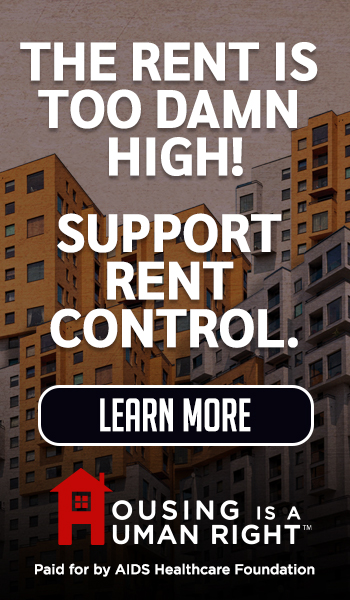Comments
HOMELESSNESS – Joanne Marie Erickson sat on her couch in her Playa Del Rey apartment last Saturday contemplating what she would do without her home of 23 years. Her eviction is set for Friday, Feb. 9. Erickson wanted her cat Muriel, who was meandering through her apartment, to remain with her. Maybe she should live in her 20-year-old VW bug, which has neither heat nor air conditioning. She could sleep in the back seat, and Muriel’s litter box could be placed on the floor of the front passenger side. But the more she thought about it, the more impossible the scenario appeared to her. “I can’t live on the street,” she said.
By Monday, as a winter rainstorm drenched California, she’d changed her mind again. She was prepared to live in her car. But she wanted to spare her indoor cat life on the streets of L.A. “I have to give Muriel up for adoption. I don’t care about me,” she said on the phone. She was weeping.
Erickson’s is the kind of slow motion calamity that city leaders are hoping to prevent. Mayor Karen Bass and the Los Angeles City Council have put a new focus on preventing evictions, as they seek to stem the rising tide of homelessness in the city. L.A. is home to 46,260 unhoused people, according to the latest count. The City Council allocated millions of dollars in rental assistance through a program, which — until it closed to applicants in October — allocated as much as six months in back rent to tenants like Erickson at risk of falling into homelessness.
At a July press conference, Councilmember Nithya Raman, a tenant advocate, said that one of the biggest barriers to eviction prevention is a lack of knowledge about forms of assistance. “The people who need support the most often don’t know about the resources that are available to them,” she said. Erickson said she was unaware of the city’s emergency renters assistance program until it was too late to apply. “Had I known about this I wouldn’t be getting evicted,” she said.
But Erickson’s challenges seem more complex than a lack of knowledge about a government program, which also has more applicants than funds. At 70, she is physically frail. She said she has had trouble finding work in an economy that favors the young. She struggles with depression and chronic pain, which leads her to feel overwhelmed. Her apartment is in a state of disarray, every surface filled with papers, boxes and clutter, a fact that she says is a source of shame. “I think I’m falling apart,” she said. Erickson also lives in a city with housing prices so high that any setback can lead a low income person on a path to homelessness.
Erickson said she went to eviction court on Jan. 9 without a lawyer, even though she said she tried to find one. In a hearing that she said lasted only five minutes, the judge gave her 30 days to vacate her apartment. “I said, ‘I don’t think I can do it in 30 days,’” she recounted. She said she was not connected to resources at the hearing. She remembers being told that if she did not leave her residence, a police officer would be at her door.
When she returned to her one-bedroom apartment after the court hearing, she said she felt sick. She has had trouble sleeping, and her fear has mounted as she approaches her eviction date. She has tried to find help online but feels overwhelmed by the multiple websites promising assistance. “It’s like a merry-go-round,” she said. She has attended an online tenant clinic. She has spoken to an attorney. She has filled three pages with the names and phone numbers of social service organizations, activist groups and agencies that might provide assistance. She has attempted to find federally subsidized housing. But nobody has arrived at her doorstep to help. She has not left her apartment since the Jan. 9 court hearing.
Erickson says she rarely goes outside due to her frail health.
“We really don’t have help for people in life crises,” said Dan Flaming, whose nonprofit Economic Roundtable has argued for a preventive approach to tackling homelessness. “We’re a society that turns the wolf loose at our own heels.”
Erickson moved to California from Saugus, a town on Massachusetts’ North Shore, in 1978. She said she was fleeing an abusive relationship. She spent most of her career as an occupational therapist, helping people with physical disabilities. She was always working, often in contract jobs. “When I was younger, I felt like I was a commodity.” She could get a job in a day. But the physical nature of her job made it challenging as her health deteriorated. She injured her lumbar while lifting a patient at a nursing home about seven years ago. Then four years ago, she fell and hurt her back again. She can name the thoracic bones that she fractured by their numbers: six, seven and eight.
Early in the pandemic, she spent a year on disability “because I was falling a lot,” she said. That’s when her neurologists told her she was in the beginning stages of post-polio syndrome stemming from a bout she had with the disease when she was 2. The syndrome leads to muscle weakness and puts survivors at high risk of bone fractures. She said she stopped receiving disability benefits in late 2020.
During the first years of the COVID pandemic, hospitals cut staff as patients avoided nonemergency visits and procedures. That meant a reduced need for occupational therapists. Erickson had trouble finding work and began paying only a portion of her $1,659 in monthly rent to her landlord, about $400, a situation enabled by a moratorium on evictions related to COVID-era hardship. By last June, Erickson had run through her savings.
She said she has continued to look for work, including retail jobs. “I was applying for three jobs a day. I was adamant about that,” she said. But nothing came through. “I think that they only want people between the ages of 25 and 35,” she said.
This article was produced by the nonprofit journalism publication Capital & Main. It is co-published here with permission.
(Jessica Goodheart is a senior reporter at Capital & Main. She has written for the Los Angeles Times, the L.A. Reader and UPI, among other publications. Prior to joining Capital & Main, she worked at the L.A. Alliance for a New Economy, where she served as research director, authoring numerous reports on labor, employment and economic issues. At LAANE she ran a successful campaign that led to a more than doubling of investment in energy efficiency programs at the nation’s largest municipally owned utility and the creation of a jobs program for disadvantaged communities. She is also a poet whose work has appeared in the Best American Poetry, the Antioch Review and in a full-length collection, Earthquake Season, which was published by Word Press.)






